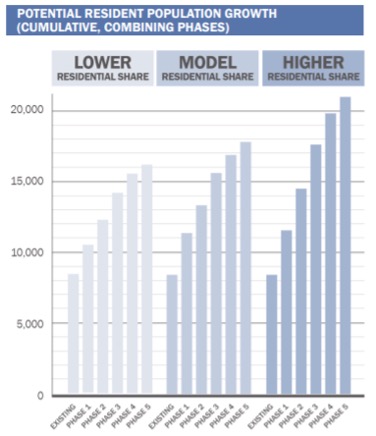What’s Next with Nicole is a biweekly opinion column. The views expressed are solely the author’s.
Infrastructure needs should be built into Arlington’s Sector plans and the Missing Middle study as part of the long-range planning process.
Currently, our long-range planning documents largely center around building heights and setbacks, building and greenery aesthetics, as well as road and public transportation configuration, design and demand management. Missing from this are other significant aspects of infrastructure including schools, public facilities, parks, public spaces and stormwater. I am defining infrastructure as anything that Arlington has used bonds to fund.
Arlington has five planning studies currently in progress — the Clarendon Sector Plan update, Crystal City Building Heights Study, Missing Middle Housing Study, Plan Langston Boulevard and Pentagon City Planning Study — that will all have significant impacts on infrastructure needs over the next several decades.
To give an example of why this is important: I was a part of the Pentagon City Planning Group and strongly advocated for including a potential range of additional housing units expected in future development. This was so that Arlington Public Schools (APS) could provide student projections and in turn, Planning would be able to include potential sites for a school that we know is needed in the area.
Staff were accommodating to that request, which was appreciated, but it was obvious that this was not a part of the usual planning process. Even with APS and Planning in the working group together, there was no “normal” procedure for the type of request that was made. That lack of coordination can be said for other aspects of infrastructure as well.

The following infrastructure planning areas are needed:
Schools: It is obvious that there is a disconnect between Arlington County and APS in school site planning. APS staff has indicated that estimates on the range of new housing units and types are needed to properly use their multiplier equation and estimate future school sizes. Typically, this information isn’t provided in a study, but was for the first time in the Pentagon City Planning. This allowed APS to communicate a potential new school footprint size, and thus, in the last draft we were able to see potential sites for a new school. This was a big win, but is not what is or will be included in all of the other planning studies.
Transportation: Current planning processes do a good job of planning transportation impacts of future development. A “Travel Demand Forecasting Model” produced by the Washington Area Council of Government’s is the basis for demand management, and plans will also prescribe extensive details on street dimensions, medians, bike lanes, public transit specs and traffic calming measures.
This type of planning should continue in the other areas of infrastructure listed, with the same type of specificity and modeling. One item for improvement in this area is that there is not always a marrying of the Comprehensive Transportation Plan to long-range planning. This lack of continuity between infrastructure planning and long-range planning will be a theme among my recommendations.
Stormwater: This doesn’t seem to be much of a consideration in planning studies. Outside of how plantings can help mitigate runoff, the foundational underground utilities and topographic layout of each planning area aren’t included. In the future, it would be helpful for the Department of Environmental Services (DES) to provide input based on the Stormwater Master Plan and how it relates to each planning study.
Parks/Public Spaces: Unlike some other infrastructure needs, public spaces and parks are generally included in planning documents. Unlike transportation though, there isn’t a clear method or goal for coverage for this space use. It would be helpful to work with DES to integrate the Public Spaces Master Plan into each planning study.
Public Facilities: This includes needs such as fire stations, community centers and libraries. When relevant, these items are generally included in the planning process. While there isn’t an immediate need, it is worth at least having a section in each planning document about community facility assets and needs in each area.
Overall, a lot of this work has already been done in other departments and it would be helpful to use that work in long-range planning. The one missing infrastructure aspect — and the most expensive one — is schools. School planning has not been done in forward-looking or comprehensive way, but these long-range plans are an ideal place to start.
Building additional density in our planning corridors is important, but it does not preclude us from making common-sense plans for infrastructure needs of a growing community. Arlington’s exceptional schools, parks and transportation accessibility are some of the many reasons why people choose to live here. Not having a clear answer to how we will plan for these things as we grow has become a question waiting to be answered.
Nicole Merlene is an Arlington native and former candidate for Virginia State Senate. She has served as a leader in the community on the boards of the Arlington County Civic Federation and North Rosslyn Civic Association, as an Arlington Economic Development commissioner, in neighborhood transportation planning groups, and as a civic liaison to the Rosslyn Business Improvement District.


